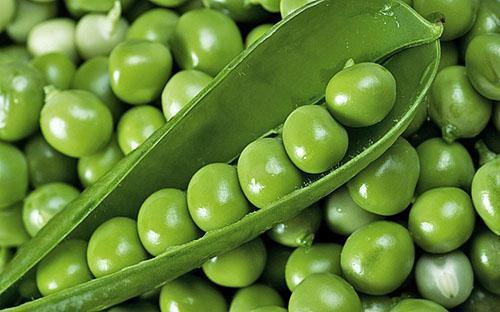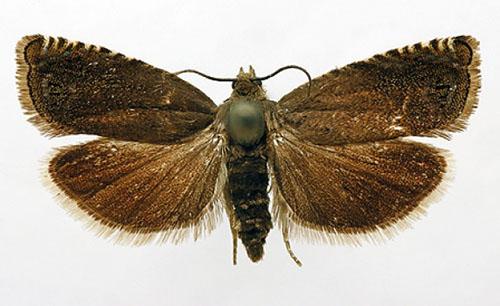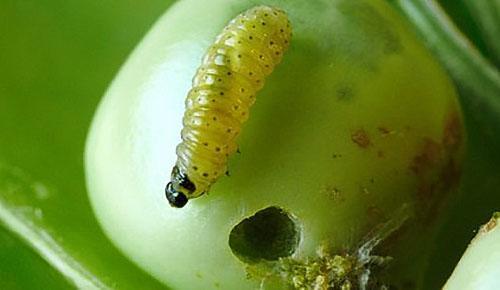Photos of diseases and pests of peas, control measures
 If the plant is weakened, the requirements of agricultural technology are not followed, the balance of nutrition and temperature is disturbed, pests will appear. In order for the garden not to suffer from the invasion of uninvited guests, the rules for growing such a common crop as peas should be observed. We will try to present a photo of pea disease, pests and control measures in this material.
If the plant is weakened, the requirements of agricultural technology are not followed, the balance of nutrition and temperature is disturbed, pests will appear. In order for the garden not to suffer from the invasion of uninvited guests, the rules for growing such a common crop as peas should be observed. We will try to present a photo of pea disease, pests and control measures in this material.
Among the many reasons for poor development or low productivity of a plant, one should single out the cause or enemy that oppresses the plant. All factors can be divided:
- insect pests;
- bacterial and fungal diseases;
- viral diseases.
Pea pests

 Pest control measures include deep tillage, and early sowing of seeds so that flowering begins before the butterfly hatches. If the soil is often loosened under the peas, you can destroy the pupae that are near the bush. Processing peas with celandine powder, ash or tobacco will also give positive results.
Pest control measures include deep tillage, and early sowing of seeds so that flowering begins before the butterfly hatches. If the soil is often loosened under the peas, you can destroy the pupae that are near the bush. Processing peas with celandine powder, ash or tobacco will also give positive results.
 Pea weevil is the larva of the bruchus beetle. The larva hibernates in the grain, pupates there and a new beetle emerges the next year. Protection measures include storing grain at subzero temperatures and pickling it with a 3% solution of sodium chloride before sowing. The floating seeds are removed, they contain beetle pupae. The fight against this type of pest of peas consists in the early sowing of the crop.
Pea weevil is the larva of the bruchus beetle. The larva hibernates in the grain, pupates there and a new beetle emerges the next year. Protection measures include storing grain at subzero temperatures and pickling it with a 3% solution of sodium chloride before sowing. The floating seeds are removed, they contain beetle pupae. The fight against this type of pest of peas consists in the early sowing of the crop.
If the peas were kept in the cold, then the beetles come out later. A clutch of eggs on the hardened surface of the pod at the wrong time dies.
 Nodule weevil does no less harm to peas. It is a small bug half a centimeter in size. He feasts on young shoots. It hibernates on plant debris. Eating the top, it does not even allow the peas to emerge, and lays the larvae, which will feed on the roots and the pea.
Nodule weevil does no less harm to peas. It is a small bug half a centimeter in size. He feasts on young shoots. It hibernates on plant debris. Eating the top, it does not even allow the peas to emerge, and lays the larvae, which will feed on the roots and the pea.
 A new generation of pests will be released in a month. You can prevent this bug from getting to the peas with deterrent compounds. Tobacco dust, ash, dust from plant residues of marigolds will become protection.
A new generation of pests will be released in a month. You can prevent this bug from getting to the peas with deterrent compounds. Tobacco dust, ash, dust from plant residues of marigolds will become protection.
 Aphid causes great damage great damage to the yield of peas in a dry year. How to treat peas from a pest depends on the population of the crop. Aphids weaken the plant by sucking sap and creating sores on the surface, where spores of fungal diseases can get. A sooty mushroom settles on its sugary secretions.
Aphid causes great damage great damage to the yield of peas in a dry year. How to treat peas from a pest depends on the population of the crop. Aphids weaken the plant by sucking sap and creating sores on the surface, where spores of fungal diseases can get. A sooty mushroom settles on its sugary secretions.
 The fight against aphids is carried out in combination with other pests. Most often, the preparations "Iskra", "Fastak" are used on peas. Fitoverm, which is approved for use in private farmsteads, is very effective.
The fight against aphids is carried out in combination with other pests. Most often, the preparations "Iskra", "Fastak" are used on peas. Fitoverm, which is approved for use in private farmsteads, is very effective.
There are many other insects that can harm the pea bed, they must be dealt with by using decoctions, infusions, spraying. But, most importantly, where the pests of peas are divorced and diseases will come after.
Pea diseases and measures to control them
 In order to protect the plant from fungal and bacterial diseases, prevention will be required. It is aimed at reducing the factors of damage and consists of:
In order to protect the plant from fungal and bacterial diseases, prevention will be required. It is aimed at reducing the factors of damage and consists of:
- in a literate crop rotation cultures;
- varietal purity of seeds and their cultivation using the treatment of the seed field with fungicides and insecticides;
- treatment of fields with peas from diseases, fungicide for peas is Bordeaux mixture, colloidal sulfur;
- the use of zoned varieties of peas.
Peas should return to their original place of sowing after 4 years. As a preventive measure, grain should be dried to 13% moisture. Seed fields are additionally treated with fungicides when the grain reaches milky ripeness. Diseases caused by fungal spores can only be suppressed with sulfur and copper preparations called fungicides. Depending on the condition of the plant, you can determine why the peas in the garden turn yellow.
 Ascochitosis, a fungal disease that manifests itself throughout the plant in the form of brown spots with a border. In the center of each spot, dots are visible, which are sacs of spores. When the spores are ripe, the pycnidia will burst and a new infection of the plant will occur. In order for the spore to germinate, certain conditions are required - wet weather, a wound on the protective coating of the plant. As a result of exposure to the disease, the plant dies, the fruits become unfit for food. There are no resistant varieties to this disease. The mycelium remains in seeds for 5 years.
Ascochitosis, a fungal disease that manifests itself throughout the plant in the form of brown spots with a border. In the center of each spot, dots are visible, which are sacs of spores. When the spores are ripe, the pycnidia will burst and a new infection of the plant will occur. In order for the spore to germinate, certain conditions are required - wet weather, a wound on the protective coating of the plant. As a result of exposure to the disease, the plant dies, the fruits become unfit for food. There are no resistant varieties to this disease. The mycelium remains in seeds for 5 years.
 Downy mildew is another formidable disease of peas, leading to its death. This disease develops in many crops, and is characterized by its manifestation at the beginning of the growing season. Only buds appear, light spots appear on top of the leaf blades, and spores develop below the plate. With high humidity and cold weather, you need to wait for an outbreak of this disease. At the first sign, dusting the beds with lime over green leaves helps. Plants stop developing, they look depressed, the crown is curly with a purple tint.
Downy mildew is another formidable disease of peas, leading to its death. This disease develops in many crops, and is characterized by its manifestation at the beginning of the growing season. Only buds appear, light spots appear on top of the leaf blades, and spores develop below the plate. With high humidity and cold weather, you need to wait for an outbreak of this disease. At the first sign, dusting the beds with lime over green leaves helps. Plants stop developing, they look depressed, the crown is curly with a purple tint.
 Rust - a dangerous fungal disease of peas. The disease spreads with milkweed and manifests itself on the plant as a change in the leaf blade. A small yellow spot is visible from above, on the back side there are bright orange pads with spores. Rust consists of two types of fungi. One destroys the leaf blade, and the other the whole plant. These two mushrooms work in pairs.
Rust - a dangerous fungal disease of peas. The disease spreads with milkweed and manifests itself on the plant as a change in the leaf blade. A small yellow spot is visible from above, on the back side there are bright orange pads with spores. Rust consists of two types of fungi. One destroys the leaf blade, and the other the whole plant. These two mushrooms work in pairs.
 Root rot - formidable diseases. When the root stops supplying food to the plant, the tugor of the leaves decreases, the bush wilts and becomes lifeless. The first impression is that the bush wilted due to lack of moisture. In fact, the roots no longer supply juice to the ground part, and additional watering of the plant will only increase the focus of the disease. Diseased plants are easily pulled out of the ground.
Root rot - formidable diseases. When the root stops supplying food to the plant, the tugor of the leaves decreases, the bush wilts and becomes lifeless. The first impression is that the bush wilted due to lack of moisture. In fact, the roots no longer supply juice to the ground part, and additional watering of the plant will only increase the focus of the disease. Diseased plants are easily pulled out of the ground.
The browning of the root part may become a sign of plant damage. Root rot can occur during dry, hot summer weather.
Not all diseases and pests of peas are listed. But the control measures for maintaining a healthy vegetable garden are similar. There are systemic fungicides and insecticides, home remedies. The task of the gardener is preventive measures in order to get a harvest of healthy vegetables without unnecessary treatments with poisonous drugs.
Normal growers process the seeds sold, and the plants are less affected by pests and diseases